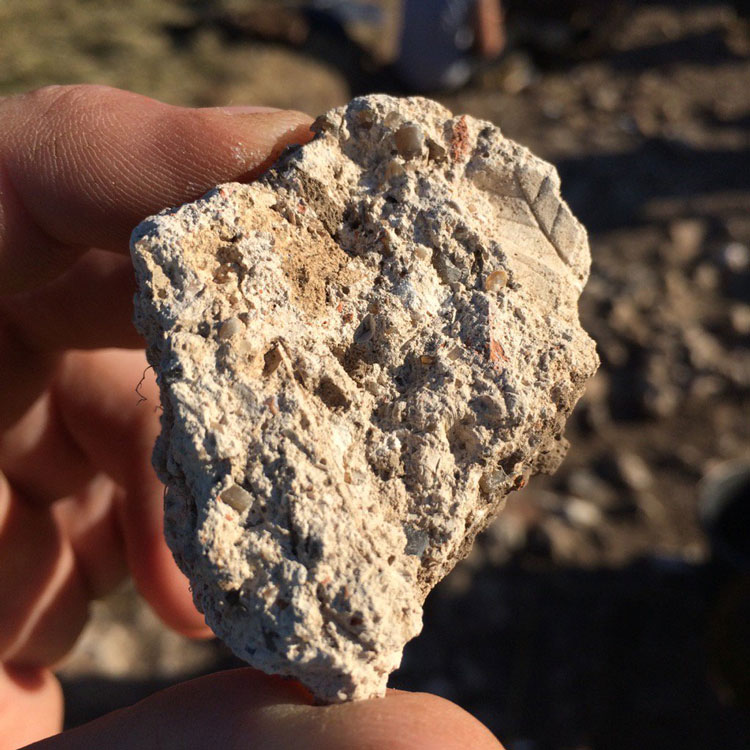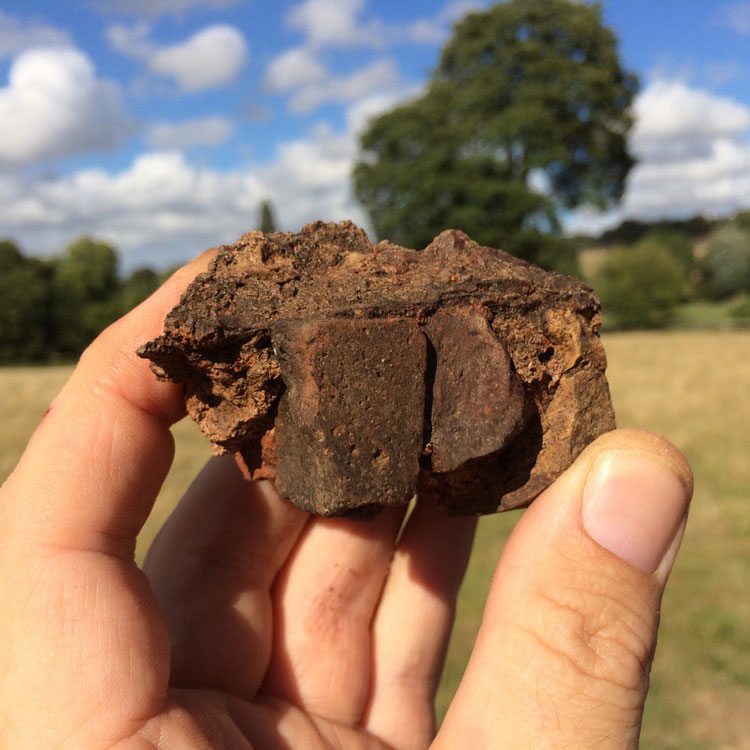Kaitlene writes: While excavating Trench A and Trench B we found large amounts of flint in the upper soil that we thought were probably naturally deposited as a result of accumulation in the valley bottom (as flint naturally occurs in the area). Then we soon realised that the flint is likely to be building material used to build the villa as we increasingly found examples with mortar on them. We then decided to measure the dimensions of a sample of flint stones. We can use this data to determine the sizes and scale of flints selected for use in construction and frequency, to get an idea of the type of flint being used to build the villa.
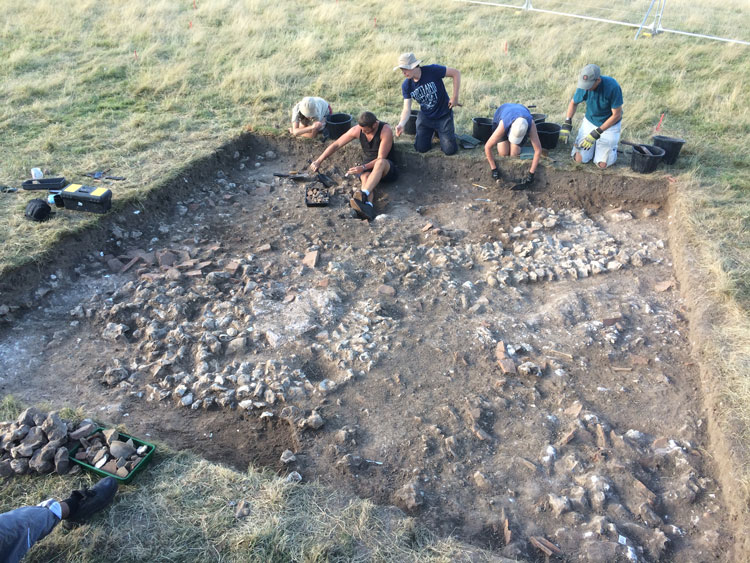
Currently at Trench A, we seem to be at foundation level (at least for the last phase of the building) which is not buried as deeply as we originally thought it would be on the basis of the radar survey. We have been troweling the trench in order to define the features, which are now becoming very visible. When observing the walls that are remaining we can see these are well made foundations of flint in mortar, and there is evidence of cutting which suggests that materials that were useful for later builders in perhaps the medieval period were ‘robbed’. They left the flints and smaller fragments of tufa building stone (what Elizabeth calls the breeze block of the Roman world) and took the best stone for their buildings.
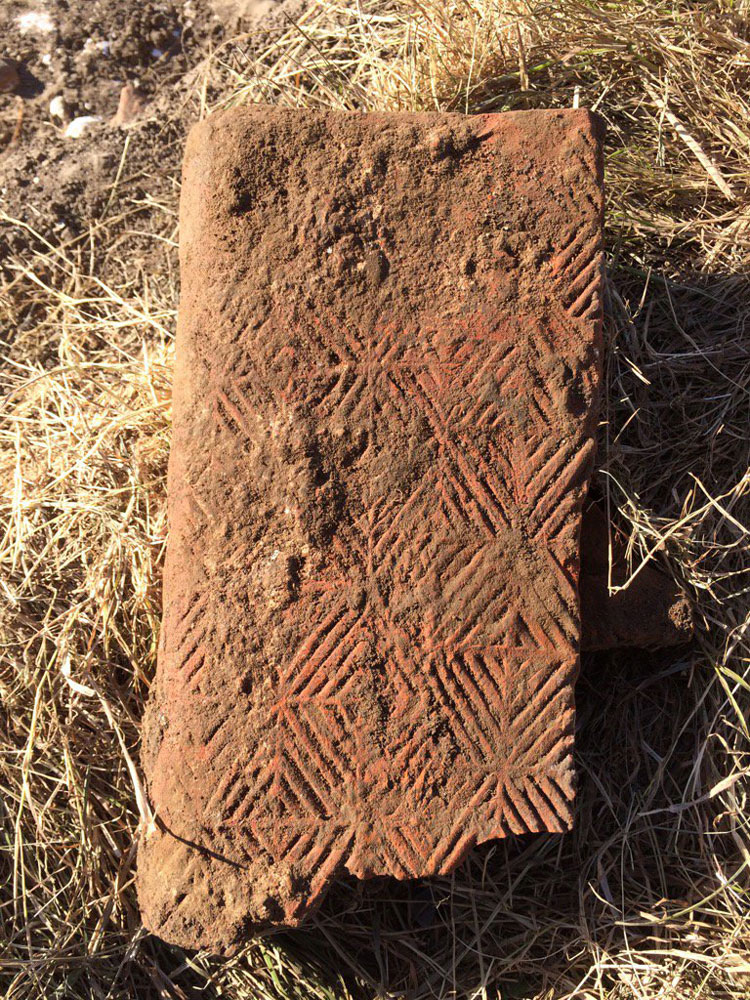
Kate writes: Monica and l have been supervising the processing of the finds from the dig. This comprises, mainly, at the moment, washing and sorting what the diggers find. We have just finished doing the same at the Folkestone (East Wear Bay) excavations. Making comparisons between the sites raises all sorts of questions. Most finds from here on the Nailbourne are, so far, fourth century/late Roman. Since my PhD thesis at the University of Kent is on later Iron Age to Roman transition l will be interested to see if there is an Iron Age phase of occupation before the Roman villa develops.
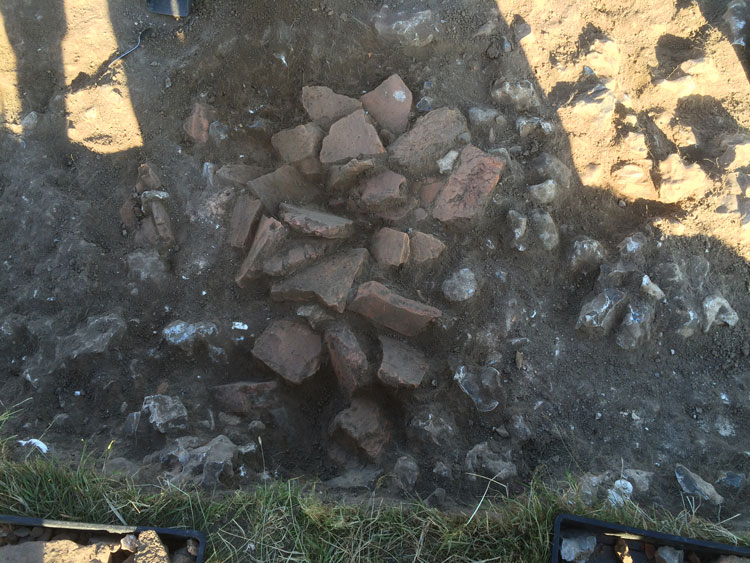
There is a great deal of Roman roof tile, heating system tile and floor tile so far, plus an amount of window glass.
The tufa building stone from this site is much denser than that at Folkestone villa. Is it from the same source but from a different level or from a different source? There is enough recovered so far to indicate that it must have been an important part of the fabric of the villa.
